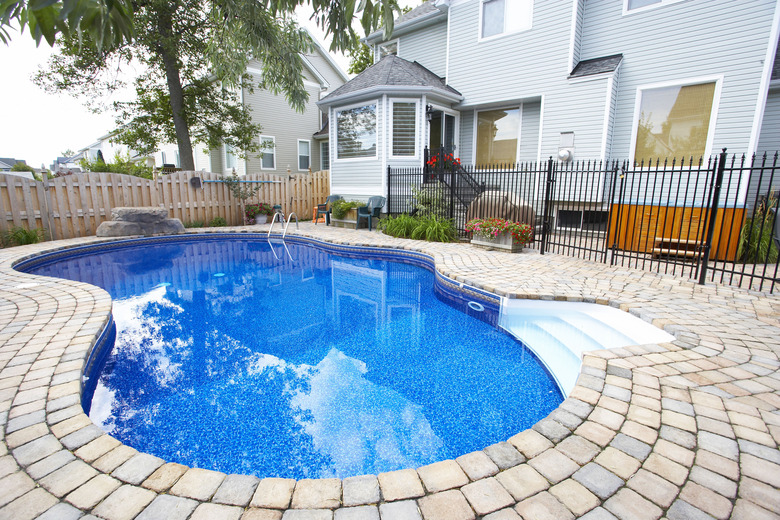Leaving A Gunite Pool Empty
Step 1
Discover whether your gunite pool has a hydrostatic valve. The hydrostatic valve is located along your gunite pool's main floor drain pipe. If you have trouble locating the circular valve, consult your pool's manual or call the installation company. When a gunite pool is left empty, its hydrostatic valve allows water beneath the pool to drain into the pool itself. Without a hydrostatic valve, an empty gunite pool may float on top of the underground water. All or part of an empty pool may pop out of the ground several inches or several feet. Or, the pressure of the surrounding water may buckle the gunite. It is inadvisable to leave a pool without a hydrostatic valve empty for any amount of time. However, if you are still considering leaving your gunite pool empty, move on to Step 2.
Step 2
- Discover whether your gunite pool has a hydrostatic valve.
- When a gunite pool is left empty, its hydrostatic valve allows water beneath the pool to drain into the pool itself.
Step 3
Contact your local county extension office or local water resources office to find out where your local water table is or will be during the time you plan to leave your gunite pool empty. Call your pool's installation company to discover if the height of the water table in your area is problematic. If the water table reaches within five feet of the depth of your pool on average, you run a significant risk of having the bottom of the pool pop out of the ground. And although hydrostatic valves lessen the likelihood, you can still have the problem. Fill the pool immediately or well before the season when heavy rains traditionally lift the water table.
Step 4
Minimize the amount of time that you must leave your gunite pool empty. Even if a hydrostatic valve is in place and your water table will remain low, leaving a gunite pool empty for a prolonged period of time is could still result in cracking, buckling or shifting. Common reasons for emptying a gunite pool are to rebalance chemicals, refresh the water or repair or resurface the gunite surface. Have all your supplies and equipment on hand and ready to use before you empty your gunite pool to minimize the amount of time that the pool remains open.
Step 5
- Contact your local county extension office or local water resources office to find out where your local water table is or will be during the time you plan to leave your gunite pool empty.
- Even if a hydrostatic valve is in place and your water table will remain low, leaving a gunite pool empty for a prolonged period of time is could still result in cracking, buckling or shifting.
